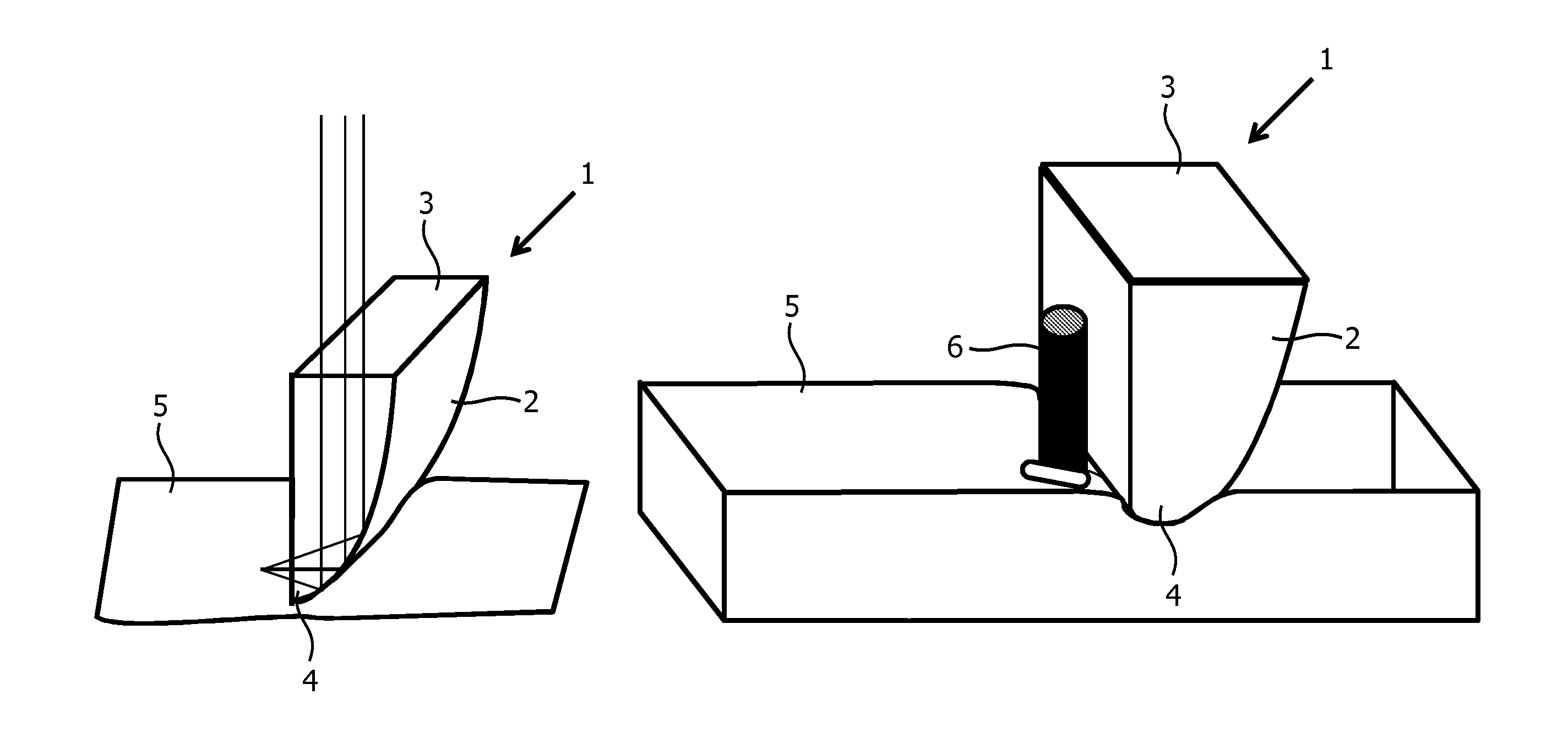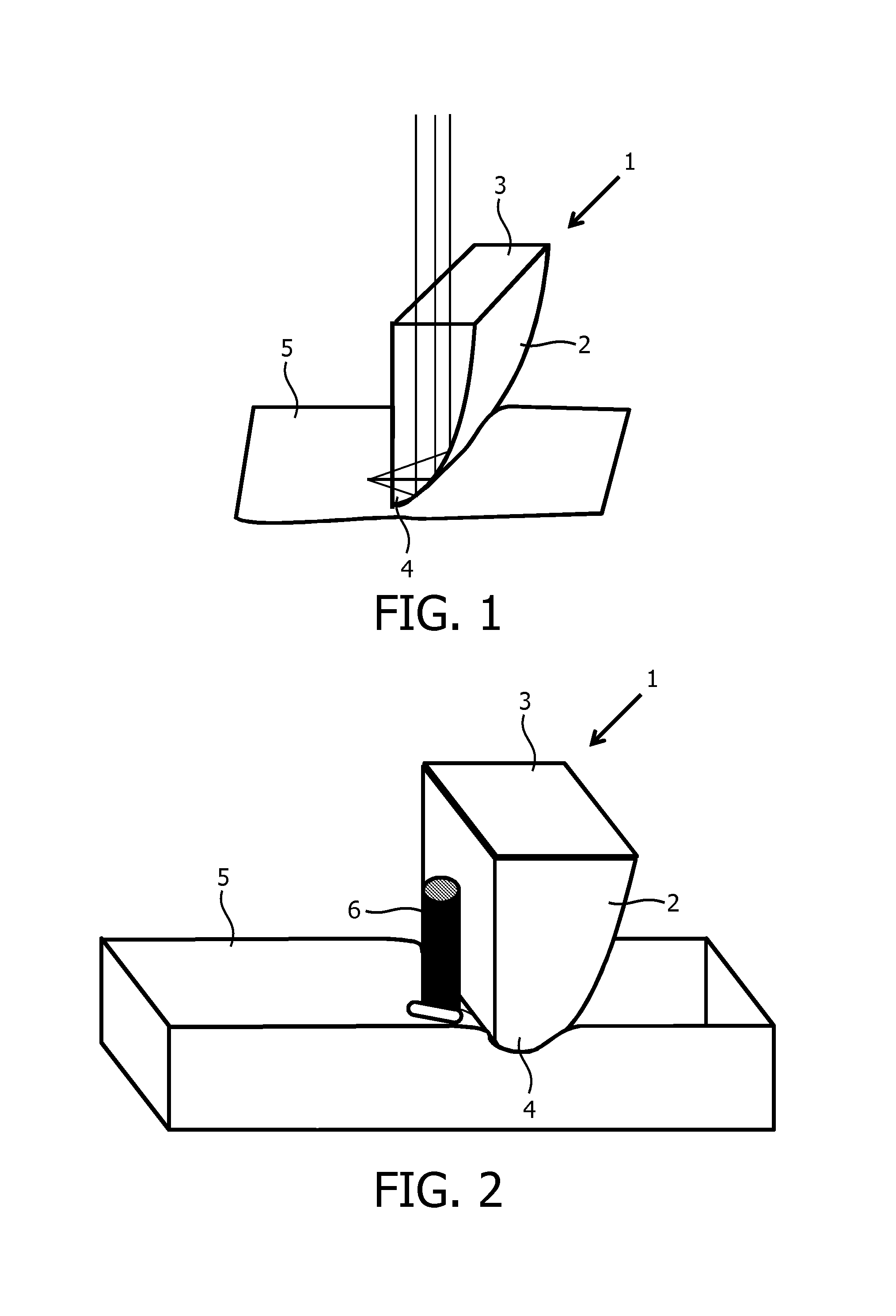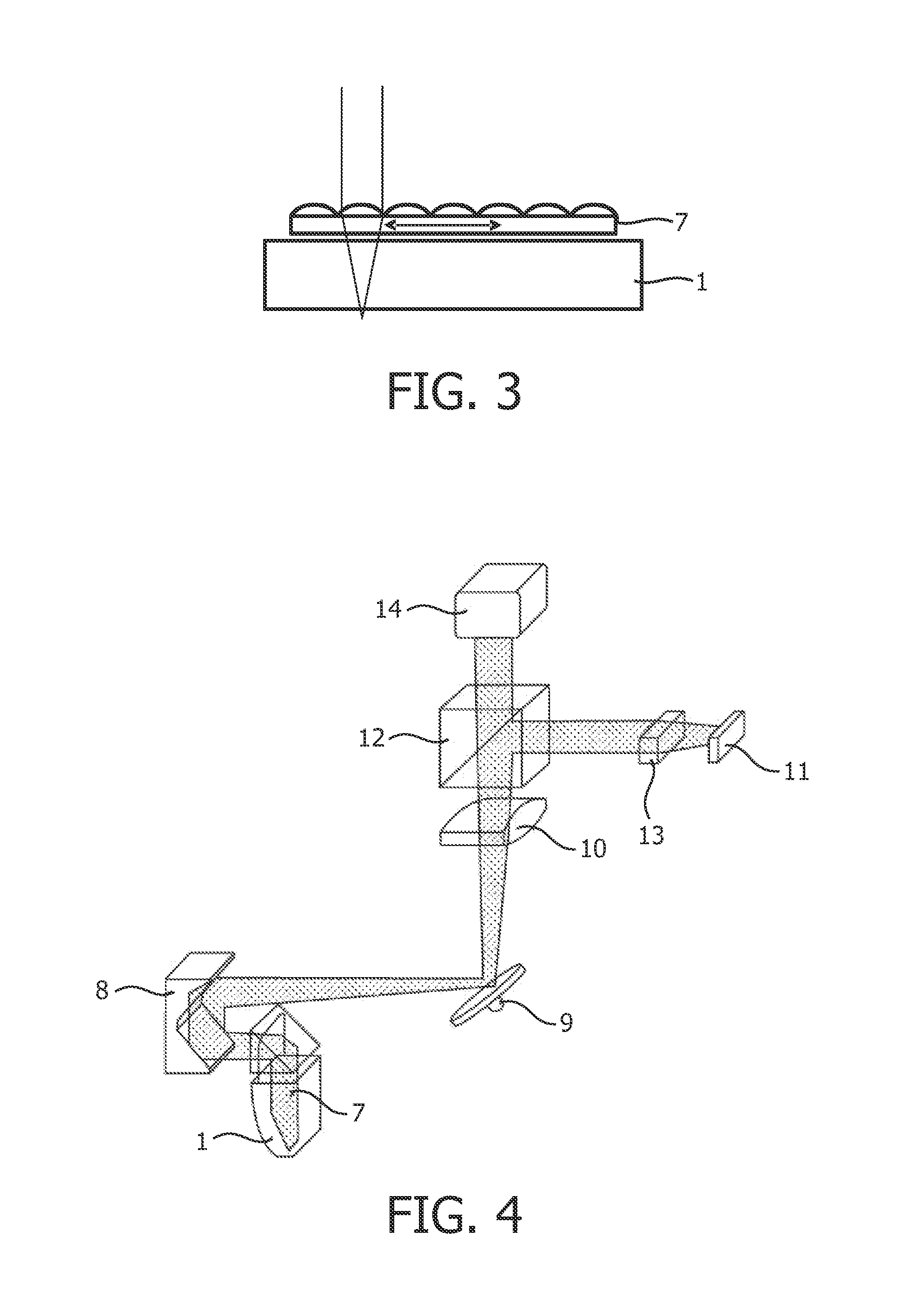Optical blade and hair cutting device
a cutting device and optical blade technology, applied in the field of optical blades and hair cutting devices, can solve the problems of limited manipulation, skin irritation, hair pulling effect, etc., and achieve the effect of improving the balance of closeness versus irritation and improving hair-skin manipulation
- Summary
- Abstract
- Description
- Claims
- Application Information
AI Technical Summary
Benefits of technology
Problems solved by technology
Method used
Image
Examples
Embodiment Construction
[0039]The optical blade according to the invention preferably comprises a number of different functionalities relating to its mechanical, geometrical and optical properties, which are going to be described in the following. According to a first preferred embodiment of the invention, the material of the optical blade is transparent to the wavelength of the light that is used for the detection unit as well as for the cutting unit. The material is preferably capable of withstanding the considerable intensity used in the cutting laser. In addition, it preferably does not introduce strong birefringence in order to avoid difficulties in the hair detection process. Depending on the wavelength of the light used, the optical blade is preferably manufactured from glass in any arbitrary shape using e.g. glass molding or diamond turning techniques or, according to other preferred embodiments of the invention, using specialty plastics, such as cyclo-olefin polymers combined with injection moldin...
PUM
 Login to View More
Login to View More Abstract
Description
Claims
Application Information
 Login to View More
Login to View More - R&D
- Intellectual Property
- Life Sciences
- Materials
- Tech Scout
- Unparalleled Data Quality
- Higher Quality Content
- 60% Fewer Hallucinations
Browse by: Latest US Patents, China's latest patents, Technical Efficacy Thesaurus, Application Domain, Technology Topic, Popular Technical Reports.
© 2025 PatSnap. All rights reserved.Legal|Privacy policy|Modern Slavery Act Transparency Statement|Sitemap|About US| Contact US: help@patsnap.com



